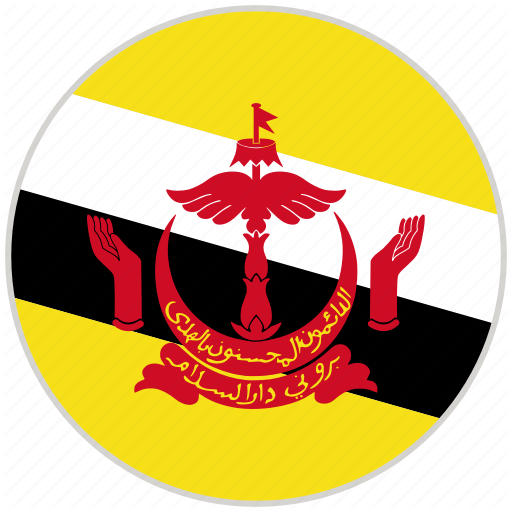Policy Recommendation
Introduction
1. The Network of East Asian Think Tanks (NEAT) held its 11th Country Coordinators Meeting (CCM) and the 7th Annual Conference (AC) from 30 August to 1 September 2009 at Grand Hyatt Hotel, Seoul , Korea
2. The NEAT reaffirms that the goal of community building in East Asia should be to promote the welfare and well-being of the people and realize the East Asian Vision of Peace, Prosperity and Progress. Community building should be based on universal values including good governance, the rule of law, democracy, human rights, and international law and norms. East Asian countries should promote these values as common goals.
Recommendations
3. NEAT submits recommendations in the following five areas for the consideration of the ASEAN Plus Three Summit.
-
East Asian Financial Cooperation
-
East Asian Investment Cooperation
-
Enhancement of Cultural Exchange
-
East Asian Environmental Cooperation
-
East Asian Food Security
The recommendations are as follows:
A. East Asian Financial Cooperation
4. Strengthen regional surveillance. The independent regional surveillance unit of the CMIM (Chiang Mai Initiative Multilateralization) should be set up as soon as possible. Monitoring and surveillance should include assessing macroeconomic, financial, and structural policies of member countries, issuing early warnings, and monitoring capital flows and exchange rates. The surveillance unit needs to encourage peer reviews among ASEAN +3 countries and strengthen capacity to produce independent conditionality in the event of crisis lending. The IMF de-link portion of the CMIM should be increased gradually and the size of the CMIM should be increased regularly.
5. Promote comprehensive regional financial cooperation. An integrated policy dialogue mechanism should be introduced to promote comprehensive financial cooperation in this region. ASEAN+3 Finance Ministers’ Meeting should be expanded into ASEAN+3 Finance Ministers and Central Bank Governors’ Meeting. The expanded group could organize relevant policy coordination activities, including the creation of an “Asian Financial Stability Dialogue” and promoting the ABMI.
6. Deepen Asian bond markets.The Credit Guarantee and Investment Mechanism (CGIM) should be exploited to expand the scale of Asian bond markets and to attract more regional savings for regional investment. Bond market infrastructure should be strengthened, such as regional credit rating agencies and a regional clearing and settlement system, to help deepen local-currency bond markets. The institution-building capacities of less developed countries should be improved, cross-border investment in Asian bonds be encouraged and the restrictive investment measures be removed.
7. Improve the international financial system. The multilateral and bilateral financial cooperation in the region should contribute to the overall reform of the international financial system, especially in enabling a bigger role of the emerging economies and strengthening surveillance and regulation of the financial markets.
B. East Asian Investment Cooperation
8. Improve the investment environment. A regional investment treaty for East Asia should be formulated. Non-biased policies, laws and regulations on not only inward but also outward investment should be implemented. Proper mechanisms for national treatment and dispute settlement should be established. An investment promotion agency, investment information and service network and a dispute settlement centre should also be created.
9. Strengthen investment cooperation on infrastructure building. The possibilities of building an East Asian Investment Cooperation Fund should be explored. The Intergovernmental Agreement on the Trans-Asian Railway Network and the stimulus packages should be taken advantage of to further promote investment cooperation on infrastructure building in the region. Public financial support should be enhanced and large amounts of private capital be mobilized to establish the public-private partnership program and develop joint infrastructure projects.
10. Promote human resources development. A training center for investment cooperation should be established to develop high-quality human resources and streamline administration and management. Labor market information networks could be developed.
11. Encourage green investment for low carbon growth. Full support should be given to green industry, including more investment in its R&D, cooperation in green technology development and transfer, and favorable taxation and lending policies.
12. Establish investment cooperation mechanism for SMEs. Investment policies should be coordinated to give effective financial support to small and medium-sized enterprises (SMEs). An East Asian SME Investment Cooperation Fund should be established to provide favorable conditions and opportunities for SME participation and cooperation in regional investment.
C. Enhancement of Cultural Exchange
13. Promote cultural exchange in East Asia because peace and prosperity of East Asian Community is contingent on understanding of both cultural diversity and cultural commonality in the region.
14. Preserve traditional culture and promote dissemination of popular culture. Pay attention to the roles played by popular culture, which has become a part of daily life. Not only developed countries but also remote places in less developed countries now have access to television drama, film and music, both locally-made and imported, thanks to the development of media technologies. Attention to popular culture does not necessarily mean to disregard traditional cultures, which are being marginalized and in danger of extinction in face of commercialization and Westernization of cultures. Measures should be taken to help traditional cultures to sustain and prosper.
15. Pursue the possibility of Common Cultural Policies in order to address issues noted above. In this regard, we propose an establishment of East Asian Cultural Foundation, which would coordinate and facilitate diverse activities of cultural exchange, sharing and cooperation. Some of the Foundation’s programs would include organizing annual or biennial East Asian Cultural Festival, designation of East Asian Cultural Capitals to highlight the commonality of East Asian cultures to regional and global audiences, and forming “research networks” to study common and diverse cultural aspects in the region.
16. Enhance study of East Asian culture and history in institutions of learning in the region.
D. East Asian Environmental Cooperation
17. Global warming and climate change issues require governments, public and private organizations and individuals to take a fresh perspective at how economic and social activities can best be organized particularly for those living in crowded urban areas. Heavy resource consumption and high waste output is no longer viable. How to make a city livable is a big challenge. Building eco-cities is one important way forward.
18. As an important model of sustainable development, an eco-city must be economically, environmentally and socially sustainable. First, the eco-city must be able to protect or, if possible, enhance the environment. Second, the eco-city must be able to contribute to economic growth including attracting investments and generating employment. Third, the eco-city must be able to meet social considerations such as increasing social harmony and cultural vibrancy. In recognition of the diversity in East Asia , individual countries and communities need to find the right balance among these three components.
19. Below are some key recommendations to APT governments on building eco-cities:
(1) Promote the development of eco-cities in particular to tackle global warming and climate change.
(2) Incorporate climate change mitigation and adaptation measures into eco-city development.
(3) Generate greater awareness of the rationale and long-term benefits of promoting eco-cities among the people, private sector and public sector (or what is commonly known as the 3 Ps).
(4) Build up human resource and institutional capabilities on environmental protection and eco-cities.
(5) Facilitate the sharing of information, experience, expertise and technology related to eco-cities such as green building, environmentally sustainable transportation, water management, biodiversity conservation, urban greenery, sanitation and waste management based on the 3Rs (Reduce, Reuse and Recycle).
(6) Target eco-city capacity building as a priority area for the ASEAN Plus Three Cooperation Fund.
(7) Promote and encourage private sector participation in the development of eco-cities.
(8) Encourage member states or local communities to draw up action plans for the development of eco-cities.
(9) Extend the existing ASEAN Initiative on Environmentally Sustainable Cities to include other cities in the region.
20. Promote East Asian Food Security cooperation and gradually build regional institutional mechanisms towards a common food market in East Asia because there will be a number of common interests and benefits in taking region-wide collective measures.
21. Further develop the regional cooperation in the East Asia Emergency Rice Reserve (EAERR) and the ASEAN Food Security Information System (AFSIS), which are expected to be the two main pillars of East Asian food security cooperation and to supplement each other. Contributions of ASEAN+3 countries to sustain EAERR activities should be increased and diversified. Significant expansion of the EAERR is needed to increase humanitarian and public stockpiles, thereby reducing hunger and poverty and ensuring human security. There should be closer coordination and integration of the activities of the EAERR and AFSIS in the ASEAN Integrated Food Security Framework (AIFSF) adopted by the 14th ASEAN Summit in 2009.
22. Adopt policies to improve productivity, encourage investment, develop logistic system, promote regional cooperation in agricultural technology and invest in R&D to stimulate agricultural production in developing countries in East Asia. For the twin-track approach to reduce poverty and hunger, intensify efforts to encourage new rural business, green-tourism, micro loans, and rural infrastructure development.
23. Explore the possibility of an East Asian common agricultural policy. In this regard, a Consultative Organization in ASEAN+3 countries should be set up, including a Permanent Secretariat to advance common food security policies in East Asia .











.png)



.png)




